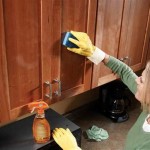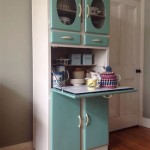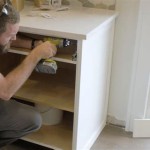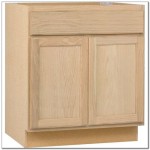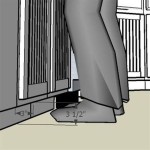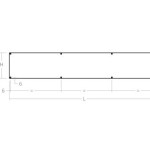How To Fix Kitchen Cabinet Handles
Kitchen cabinet handles are essential hardware components, providing both functionality and aesthetic appeal within the kitchen space. Over time, these handles can become loose, damaged, or break entirely due to regular use, environmental factors, or faulty installation. Understanding how to properly fix kitchen cabinet handles is a valuable skill that can save time, money, and prolong the life of kitchen cabinetry. This article provides a comprehensive guide to common handle problems and the appropriate solutions for restoring their functionality and appearance.
Identifying Common Kitchen Cabinet Handle Problems
Before initiating any repair, it is crucial to accurately diagnose the issue afflicting the cabinet handle. Common problems include loose handles, stripped screw holes, broken handles, and tarnished or corroded finishes. Each of these problems requires a specific approach to ensure a durable and aesthetically pleasing repair.
Loose Handles: This is perhaps the most frequent issue encountered. Loose handles result from screws that have worked themselves out over time, often due to vibrations from opening and closing the cabinet doors or drawers. Repeated tightening of the same screws into the existing holes can enlarge and strip the holes, exacerbating the problem.
Stripped Screw Holes: A stripped screw hole occurs when the threads inside the wood (or cabinet material) become damaged, preventing the screw from gripping properly. This damage can be caused by over-tightening screws, using screws that are too small, or general wear and tear on the cabinet material. The screw spins freely without tightening, leading to a wobbly or completely detached handle.
Broken Handles: Physical damage, such as cracks, breaks, or complete detachment, can occur due to excessive force or impact. Certain handle materials, like plastic or brittle metals, are more susceptible to breakage than others. This issue requires either repairing the broken handle (if feasible) or replacing it with a new one.
Tarnished or Corroded Finishes: Over time, the finish on cabinet handles can deteriorate due to exposure to moisture, cleaning agents, or simply age. Tarnishing and corrosion not only detract from the appearance of the handles but can also weaken the material, making it more susceptible to damage. While this is primarily an aesthetic issue, addressing it can prevent further degradation of the handle.
Tools and Materials Required for Kitchen Cabinet Handle Repair
Having the necessary tools and materials readily available streamlines the repair process and ensures a professional outcome. A basic toolkit for fixing kitchen cabinet handles should include:
Screwdrivers: A set of screwdrivers with various sizes and head types (Phillips head and flat head) is essential for tightening or removing screws. It is advisable to have both standard-sized and smaller, precision screwdrivers for accessing screws in tight spaces.
Drill/Driver: A power drill/driver can be helpful, particularly for tasks like installing screw hole repairs or pre-drilling pilot holes. Ensure the drill/driver is equipped with a clutch setting to avoid over-tightening screws and stripping the holes.
Wood Glue: Wood glue is necessary for repairing stripped screw holes using techniques like inserting wood slivers or dowels. Choose a high-quality wood glue that dries strong and is suitable for the type of wood used in the cabinets.
Wood Filler: Wood filler is another option for repairing stripped screw holes. It can fill the damaged area, providing a stable base for the screw to grip. Choose a wood filler that matches the color of the cabinets as closely as possible.
Toothpicks or Wood Shims: Toothpicks or small wood shims can be used to add extra grip to loose screws in slightly stripped holes. These items are readily available and provide a simple, temporary solution.
Dowels: Small wooden dowels can be used to completely fill stripped screw holes, providing a solid base for re-drilling. Select dowels that are slightly larger in diameter than the screw holes.
Replacement Screws: Having a variety of replacement screws on hand is crucial. Ensure the screws are the correct length and head type for the handles and the thickness of the cabinet doors or drawers. Consider using slightly longer screws for a more secure grip (but ensure they don't protrude through the other side).
Clean Cloths: Clean cloths are necessary for wiping away excess glue, wood filler, or debris during the repair process. They also help to keep the work area clean and organized.
Measuring Tape: A measuring tape is required for determining the size of replacement handles or screws, as well as for accurately positioning new handles during installation.
Safety Glasses: Safety glasses are essential to protect the eyes from wood shavings, dust, or other debris that may be generated during the repair process.
Methods for Repairing Kitchen Cabinet Handles
The specific repair method depends on the nature and severity of the problem. The following sections outline several techniques for addressing common issues with kitchen cabinet handles.
Tightening Loose Handles: The simplest solution for a loose handle is to tighten the screws. However, it's important to avoid over-tightening, which can strip the screw holes. If the screws are loose despite being tightened, proceed to the methods for repairing stripped screw holes.
Repairing Stripped Screw Holes Using Toothpicks and Wood Glue: This method is suitable for slightly stripped screw holes. Break several toothpicks into small pieces and insert them into the screw hole along with a small amount of wood glue. Allow the glue to dry completely. Then, carefully re-insert the screw. The toothpicks will add extra grip and help the screw hold in place. This is a temporary solution, but it often works for handles that are not subjected to heavy use.
Repairing Stripped Screw Holes Using Wood Filler: This method provides a more substantial repair. Apply a generous amount of wood filler to the stripped screw hole, ensuring it fills the entire void. Allow the wood filler to dry completely according to the manufacturer's instructions. Once dry, use a drill with a small drill bit (slightly smaller than the screw diameter) to create a pilot hole in the center of the filled area. Carefully re-insert the screw. The wood filler provides a solid base for the screw to grip, restoring the handle's stability.
Repairing Stripped Screw Holes Using Dowels and Wood Glue: This is the most robust method for repairing severely stripped screw holes. Drill out the existing screw hole using a drill bit that matches the diameter of the dowel. Apply wood glue to the dowel and insert it into the drilled hole. Allow the glue to dry completely. Once the glue is dry, use a saw or chisel to trim the excess dowel flush with the cabinet surface. Then, drill a pilot hole in the center of the dowel and re-insert the screw. This method effectively creates a brand new screw hole within the solid dowel.
Repairing Broken Handles: Repairing a broken handle depends on the material and the nature of the break. For minor cracks in plastic handles, epoxy adhesive can be used to bond the pieces together. However, this repair is often not durable, and replacement is usually the best option. For broken metal handles, welding or soldering might be possible, but this requires specialized equipment and skills. Generally, replacing a broken handle is the most practical solution.
Replacing Kitchen Cabinet Handles: Replacing handles is a straightforward process. First, remove the old handles by unscrewing them. Measure the distance between the screw holes (center to center) on the old handles. This measurement is crucial when selecting replacement handles to ensure they fit the existing holes. When purchasing new handles, consider the overall style and finish of the kitchen cabinetry. Install the new handles using the appropriate screws, ensuring they are tightened securely.
Cleaning and Polishing Tarnished or Corroded Handles: Tarnished or corroded handles can often be restored to their original luster with proper cleaning and polishing. Start by cleaning the handles with a mild soap and water solution to remove any dirt or grime. For metal handles, use a metal polish specific to the type of metal (e.g., brass polish, silver polish). Apply the polish according to the manufacturer's instructions and buff the handles with a clean cloth. For handles with a clear coat finish, avoid using abrasive polishes, as they can damage the finish. Instead, use a non-abrasive cleaner and a soft cloth.
Preventative Maintenance for Kitchen Cabinet Handles: Regular maintenance can prevent many common handle problems. Periodically check the screws on all cabinet handles and tighten them as needed. Avoid slamming cabinet doors or drawers, as this can loosen the screws and damage the handles. Clean the handles regularly to prevent the buildup of dirt and grime. If handles are exposed to excessive moisture, consider applying a protective coating to prevent corrosion.

Fix It If Cabinet Handles Installed Wrong Green With Decor

Fixing A Bad Cabinet Handle Installation

Fix It If Cabinet Handles Installed Wrong Green With Decor

How To Install Cabinet Handles Ultimate Stress Free Tips

How To Install Hardware Like A Pro Kitchen Renovation House Of Hepworths

Fix It If Cabinet Handles Installed Wrong Green With Decor

How To Install Cabinet Handles Ultimate Stress Free Tips

How To Install Cabinet Handles Ultimate Stress Free Tips

How To Install Cabinet Hardware Ask This Old House

The Best Ways To Replace Your Kitchen Cabinet Handles Hiatt Hardware
Related Posts

